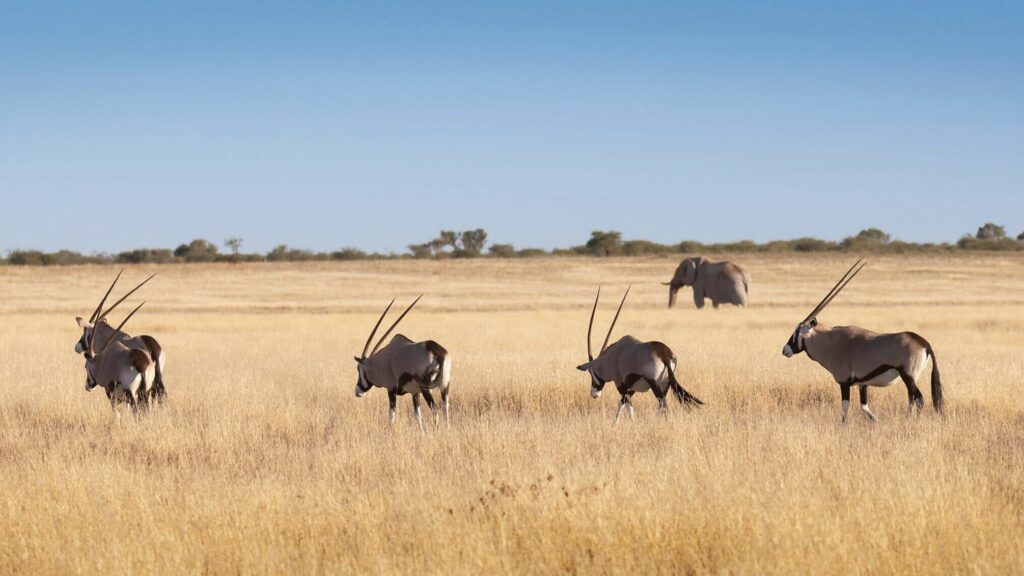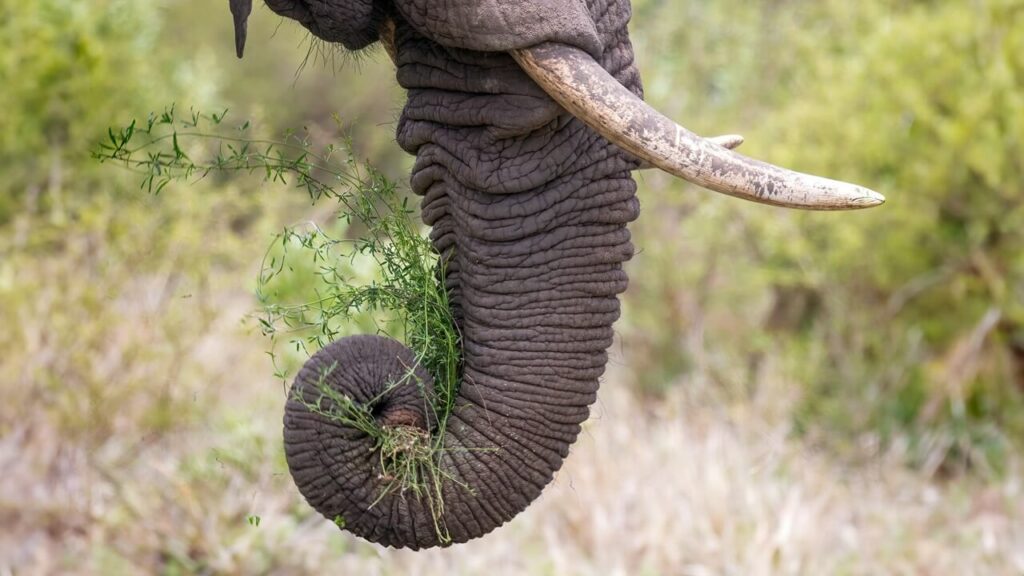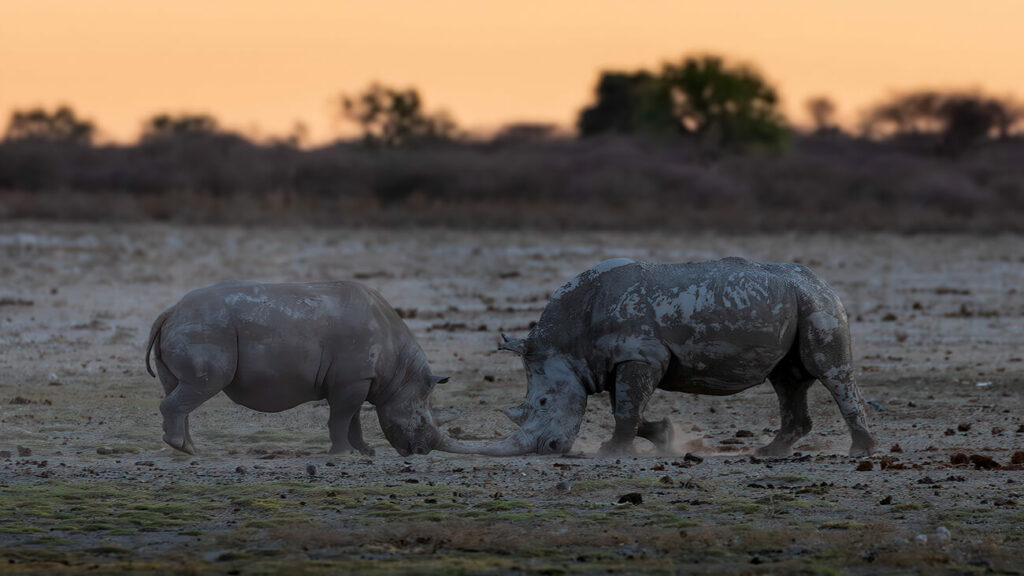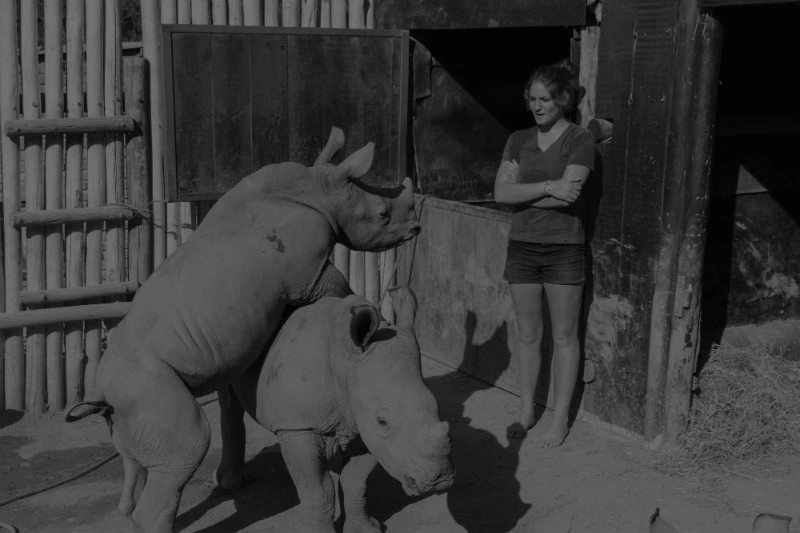Black Rhinoceros
Black Rhinoceros – The Basics
Black rhinoceroses, with their prehistoric look and formidable horns, are an iconic symbol of African wildlife. Sadly, these impressive creatures are critically endangered, making their conservation a battle against time. Let’s delve into their fascinating lives and the fight to keep them roaming the continent.
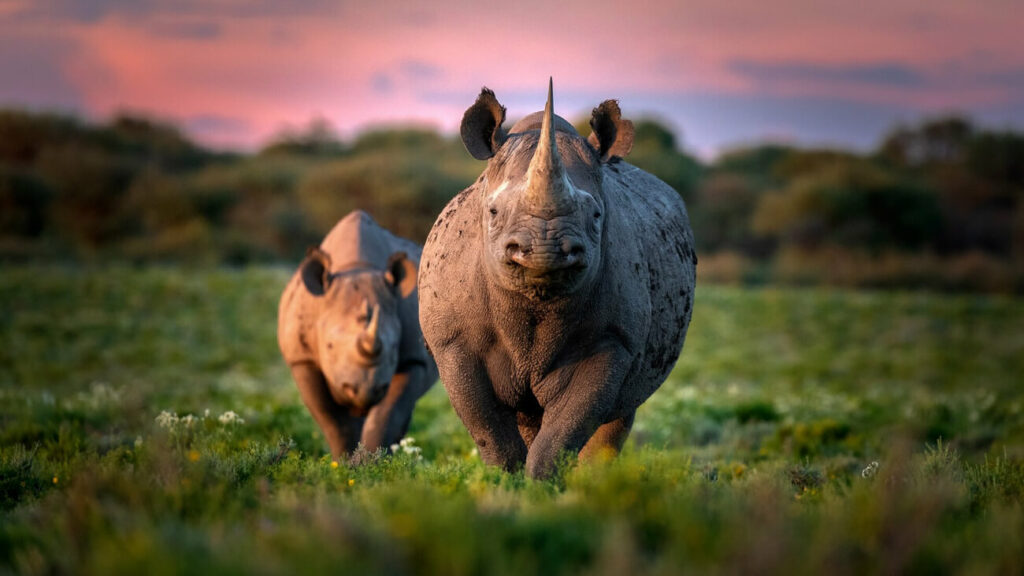
Help Two black rhino cows on a calcrete pan in summer, Khamab Kalahari Reserve, South Africa
Black Rhinoceros – Quickfire Facts:
- Weight: Adult Black Rhinos typically weigh between 800 to 1400 kg (1760 to 3080 lbs). Speed: Black Rhinos are not particularly fast, with a maximum speed of around 56 km/h (35 mph).
- Diet: Black Rhinos are browsers, and their diet primarily consists of leaves, branches, shoots, fruits, grasses, and legumes. They are known to be selective feeders and prefer certain plants (Acacia, Vachellia, Senegalia, and Euphoribiaceae). They use their hooked upper lip to grasp foliage while grazing.
- Threats: Black Rhinos are facing numerous threats, including habitat loss, poaching, and human-wildlife conflicts.
- Social Behavior: Black Rhinos are generally solitary animals, except during mating season. They are active during the day and spend most of their time browsing or resting. They are not very territorial animals, and their territories overlap with other black rhinos.
- Reproduction: Black Rhinos have a gestation period of around 15-16 months and give birth to a single calf. The calf will stay with its mother for 2-3 years before becoming independent.
Understanding the Black Rhino: Taxonomy and Origins
Black rhinos (Diceros bicornis) belong to the rhinoceros family (Rhinocerotidae). Despite their name, they’re actually more of a dark gray color! Their most striking feature is their two horns, with the front one being larger. These horns are made of keratin, the same material as our fingernails!
Size and Strength: Not Built for Speed
Adult black rhinos are massive! They can weigh between 800 to 1400 kg (1760 to 3080 lbs) and stand up to 1.8 meters (6 feet) tall at the shoulder. While powerful, they’re surprisingly not built for speed, reaching a top sprint of around 56 km/h (35 mph).
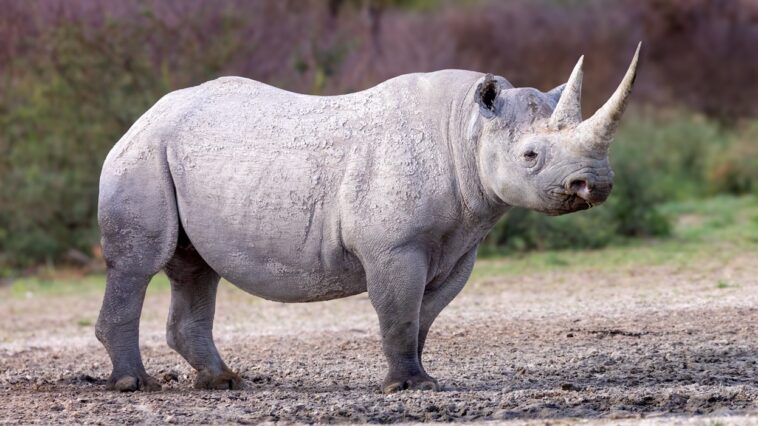
Black Black rhino at a watering hole in Khamab Kalahari Reserve, South Africa
The Rhino’s Unique Diet and Its Ecosystem Role
Black rhinos are browsers, meaning they munch on leaves, branches, shoots, and fruits. Their hooked upper lip helps them grasp even thorny branches. By selectively browsing, they actually help shape the landscape, preventing any one plant species from becoming too dominant.
The Solitary Life (with a Few Exceptions)
Black rhinos are generally solitary creatures. However, this rule bends during mating season, and mothers will fiercely protect their calves for up to three years. While they have territories, there’s often overlap, especially among females. Males, on the other hand, can get pretty feisty with each other when competing for territory or a mate!
Black Rhinoceros Reproduction: A Long Wait
A female black rhino’s pregnancy (gestation) lasts a whopping 15-16 months! She gives birth to a single calf, who relies on her completely for the first few years of its life.
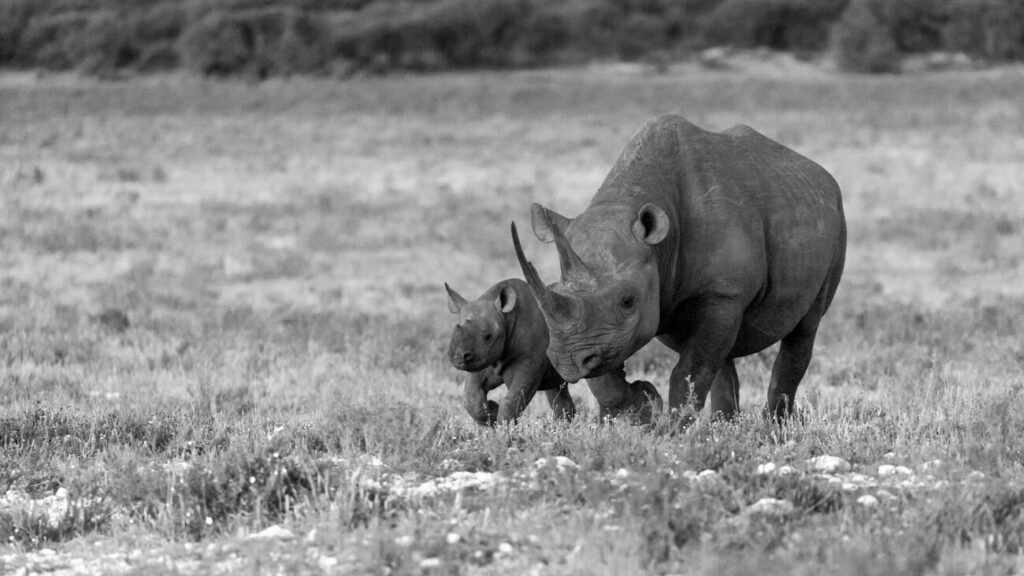
Black Black rhinoceros cow and her calf when volunteering at Working with Wildlife, Khamab Kalahari Reserve, South Africa
Why Is The Black Rhinoceros Endangered?
The greatest threat to black rhinos is poaching. Their horns are tragically sought after for use in traditional medicine (where they have no proven benefit) and as status symbols. This illegal trade has devastated their population. Other threats include habitat loss due to human encroachment and conflicts with local communities.
Can We Save the Black Rhinoceros?
There’s hope! While the situation is urgent, dedicated conservation efforts are making a difference. Anti-poaching patrols, protected areas, educating communities, and even carefully relocating rhinos to safer locations are all crucial strategies.
The Kalahari: A Harsh Home for a Hardy Rhino
The Kalahari Desert might seem like an unlikely place for rhinos, but black rhinos have cleverly adapted! They seek out food and water sources with their keen sense of smell, browse a variety of tough desert plants, and stick to the cooler hours of the day to conserve energy.
YOU Can Help – Even from Afar
Want to make a difference for black rhinos? Here’s how:
- Support reputable rhino conservation organizations
- Choose responsible wildlife tourism
- Spread the word about the rhino poaching crisis
Your Black Rhinoceros Questions Answered
Remember: Every action, big or small, helps give these magnificent animals a fighting chance!
Want to see Black Rhinos for yourself? Our Project let’s you join a Kalahari Safari to help African Wildlife or Contact Us for any other questions or read our Testimonials!
Learn More about Black Rhinos here.
